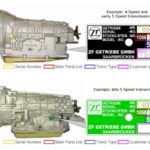The ZIL 131, an icon of the Soviet automotive industry, is renowned not only for its durability and impressive off-road capabilities but also for its outstanding towing capacity. To gain a deeper understanding of this exceptional feature, let’s delve into the details of this legendary truck with Xe Tải Mỹ Đình.
ZIL, an abbreviation for “Factory named after Likhachev,” stands as a monument in the history of Soviet and Russian vehicle manufacturing. The factory is named after Ivan Alekseevich Likhachev, a talented chief architect who played a significant role in building and developing the renowned ZIL truck series, including the ZIL 131.
From the 1940s to the 1950s, under Ivan Likhachev’s leadership, ZIL rose to become an industrial giant, equipped with the most advanced technology of its time. The factory’s annual production capacity reached an impressive 150,000 trucks, making a significant contribution to the economic and military development of the Soviet Union.
ZIL-150 truck, the predecessor to the ZIL-131, showcasing early ZIL design and engineering foundations.
The ZIL-131, a true “workhorse” of the Soviet Union, was born from the development experience of previous models such as the ZIL-150, ZIL-164, and ZIL-130. However, the ZIL-131 incorporated significant improvements, especially in operational capabilities and towing capacity, meeting the increasing demands of both the military and civilian sectors.
Initially, the ZIL-131 was primarily designed for artillery towing, a role demanding maximum strength and reliability. Compared to its predecessors like the ZIL-151 and ZIL-157, the ZIL-131 was superior in terms of engine, chassis, and drivetrain, ensuring powerful and stable towing capacity across all terrains.
In 1960, the ZIL-131 was recognized as the most outstanding three-axle vehicle in the Soviet Union. It boasted a large towing capacity, a powerful yet fuel-efficient engine – a crucial factor in harsh operating conditions. The limitations in long-distance maneuverability of early versions were gradually overcome, transforming the ZIL-131 into a versatile truck serving various purposes.
Soviet military ZIL-131A truck, highlighting its robust design and operational capabilities, especially for artillery towing and military transport.
Engine and Factors Influencing the Towing Capacity of the ZIL 131:
To achieve the impressive towing capacity of the ZIL 131, ZIL equipped this model with a robust V8 gasoline engine, featuring a large displacement and high power output. This engine, combined with a 5-speed gearbox, a 3-axle all-wheel-drive system, and a sturdy suspension, created agile handling and superior pulling power.
The chassis of the ZIL-131 was constructed from original steel, with a low and sturdy design, helping to lower the vehicle’s center of gravity and increase stability when operating and towing heavy loads. Conical disc wheels and specialized off-road tires also contributed to enhancing road grip and off-road capability, particularly crucial when the vehicle had to operate in off-road conditions or tow artillery on the battlefield.
Applications and the Role of Artillery Towing for the ZIL-131:
As mentioned, the ZIL-131 was initially developed with the primary role of artillery towing for the Soviet army. The towing capacity of the ZIL 131 allowed it to easily tow heavy artillery pieces, ensuring mobility and firepower for the artillery forces.
However, the ZIL-131 was not limited to the role of artillery towing. With its versatility and high reliability, the truck was also widely used in many other fields such as cargo transportation, troop transport, ambulance services, and even as a platform for specialized vehicles like cranes and fuel tankers.
ZIL-131 Today and Collectible Value:
Although production ceased long ago, the ZIL-131 remains an irreplaceable symbol in the hearts of truck enthusiasts and military history buffs. In Vietnam, the ZIL-131 also served in the military and economic sectors, leaving a deep impression.
Today, the remaining “original” ZIL-131s have become collector’s items for many. Studying and restoring these vehicles is not only a hobby but also a way to appreciate and preserve a part of Soviet history and technological excellence.
Conclusion:
The ZIL-131 rightfully deserves its legendary status in the world of trucks. The towing capacity of the ZIL 131 stems not only from its powerful engine but also from the perfect combination of a robust chassis design, superior drivetrain, and agile handling. Despite the passage of time, the ZIL-131 remains a testament to durability, strength, and exceptional capabilities, especially in its legendary role as the “king of artillery towing.”
